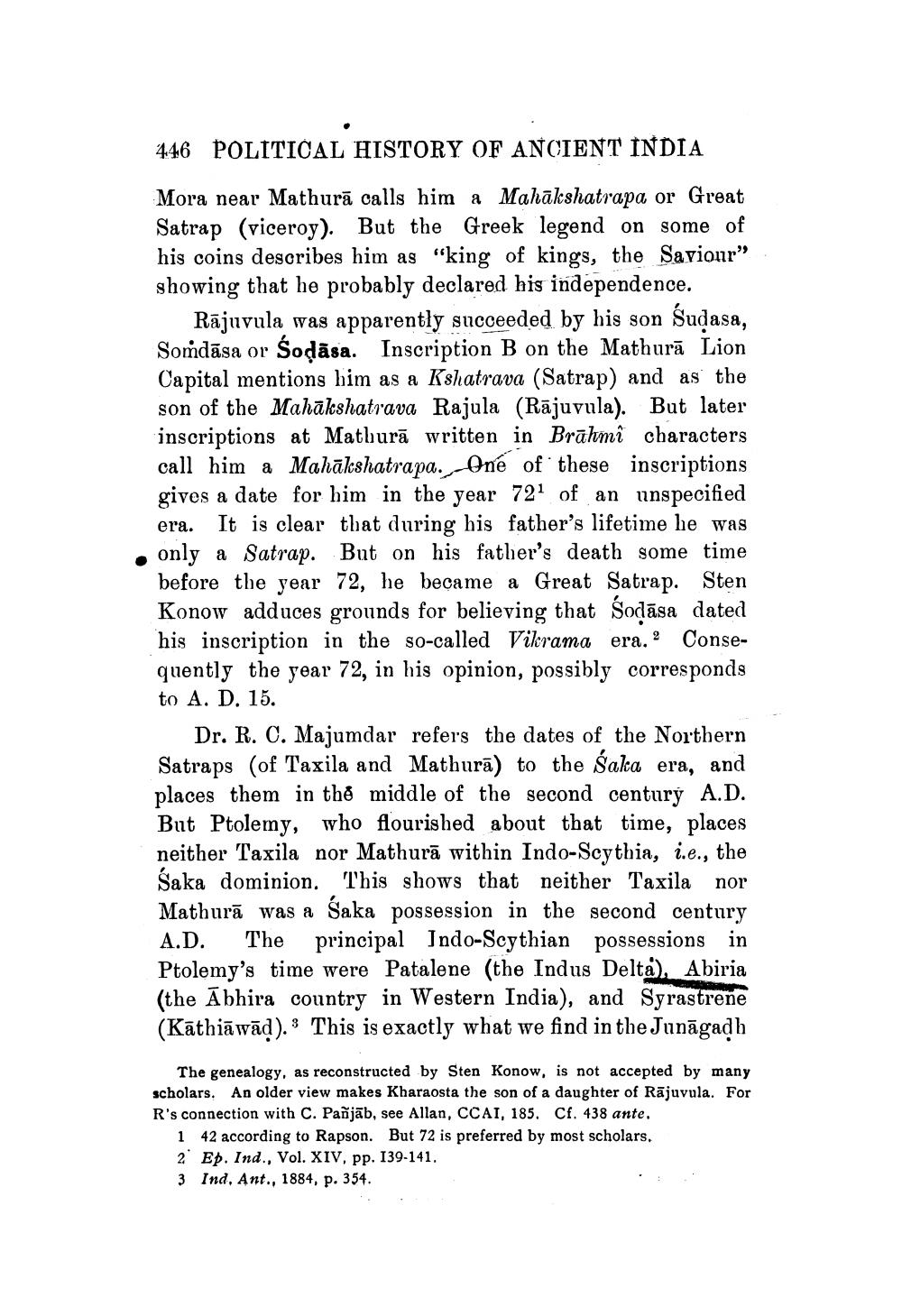________________
446 POLITICAL HISTORY OF ANCIENT INDIA
Mora near Mathurā calls him a Mahākshatrapa or Great Satrap (viceroy). But the Greek legend on some of his coins describes him as "king of kings, the Savionr” showing that he probably declared his independence.
Rājuvula was apparently succeeded by his son Áudasa, Somdāsa or Šodāsa. Inscription B on the Mathurā Lion Capital mentions him as a Kshatrava (Satrap) and as the son of the Mahākshatrava Rajula (Rājuvula). But later inscriptions at Mathurā written in Brāhmî characters call him a Mahākshatrapa. One of these inscriptions gives a date for him in the year 721 of an unspecified
era. It is clear that during his father's lifetime he was . only a Satrap. But on his father's death some time before the year 72, he became a Great Satrap. Sten Konow adduces grounds for believing that Sodāsa dated his inscription in the so-called Vikrama era.2 Consequently the year 72, in his opinion, possibly corresponds to A. D. 15.
Dr. R. C. Majumdar refers the dates of the Northern Satraps (of Taxila and Mathurā) to the saka era, and places them in th: middle of the second century A.D. But Ptolemy, who flourished about that time, places neither Taxila nor Mathurā within Indo-Scythia, i.e., the Śaka dominion. This shows that neither Taxila nor Mathurā was a Saka possession in the second century A.D. The principal Indo-Scythian possessions in Ptolemy's time were Patalene (the Indus Delta). Abiria (the Abhira country in Western India), and Syrastrene (Kathiāwād). This is exactly what we find in the Junāgadh
The genealogy, as reconstructed by Sten Konow, is not accepted by many scholars. An older view makes Kharaosta the son of a daughter of Rājuvula. For R's connection with C. Pañjāb, see Allan, CCAI, 185. Cf. 438 ante.
1 42 according to Rapson. But 72 is preferred by most scholars. 2 Ep. Ind., Vol. XIV, pp. 139-141. 3 Ind. Ant., 1884, p. 354.




